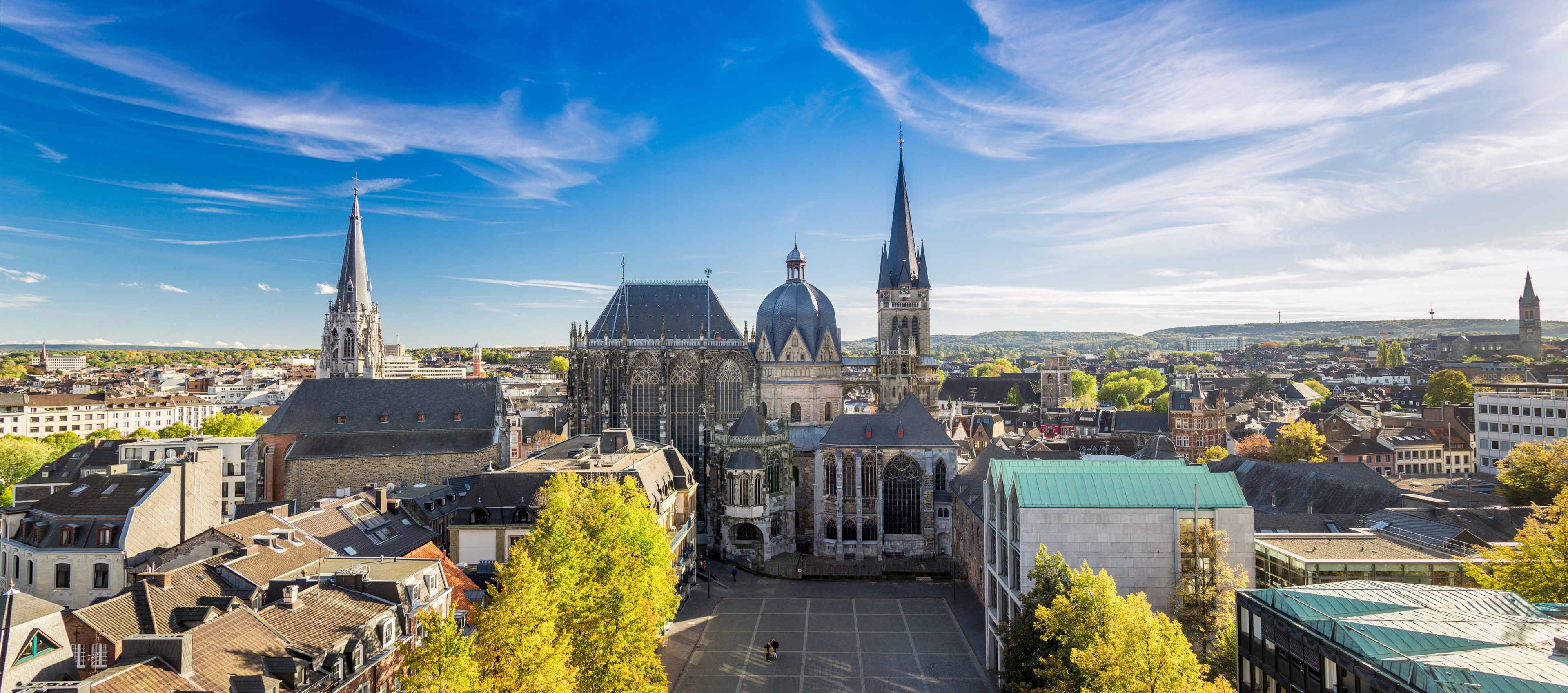Rhine Frontiers: Rome's Germanic Borderlands

Germany’s history with the Roman Empire is both rich and complex. The Roman Empire first made contact with the Germanic tribes during the 1st century BC. The most notable event in this early period was the Battle of the Teutoburg Forest in 9 AD, where an alliance of Germanic tribes ambushed and destroyed three Roman legions. This episode – long remembered in Rome and etched in Augustus’ memory – brought about a change in Roman strategies in Germany.
Over the following centuries, the Romans maintained a presence along the Rhine and Danube rivers, constructing fortifications and engaging in trade and occasional conflict with the Germanic tribes. The Roman influence can still be seen today in the remnants of their settlements, roads and fortifications found throughout modern Germany.
In this beautiful part of Europe often overlooked by tourists, we explore extraordinary museums, such as the Romano-Germanic Museum in Cologne and the Museum fur Antike Sciffahrt in Mainz, stunning houses such as the Ahrweiler Villa and the Villa Nennig, along with the limes strategies for controlling its borders. We end with Aachen, the stunning capital of the Holy Roman Empire with its unique cathedral.
Join Andante on their tour Roman Germany to explore the Rhine frontier. Explore the remains of the fort and reconstructed watchtower at the UNESCO site of Saalburg and admire the richly illustrated gladiatorial mosaic at the Villa Nennig, one of the most important Roman artefacts north of the Alps.

Cologne
One of the oldest cities in Germany, Cologne was founded by the Romans around 39 BC as a military outpost and later became the capital of the Roman province of Germania Inferior in 50 AD. Evidence of Cologne’s Roman past can still be seen in various archaeological sites, such as the Roman-Germanic Museum, which houses a vast collection of artefacts, including mosaics, pottery and statues. The remains of the ancient city wall and the Praetorium, the former Roman governor’s palace, are also notable historical landmarks that highlight Cologne’s significance during the Roman era.
Romano-Germanic Museum has an excellent collection of artefacts from the Roman colony and is built over a section of a Roman road, as well as an impressive elite domus which contains a wonderfully preserved mosaic of Dionysus.

Zugmantel and Saalburg
Zugmantel and Saalburg are ancient Roman forts located in the Taunus Mountain range of Germany. It was part of the Upper Germanic-Rhaetian Limes, which was a frontier line of the Roman Empire. The fort served as a strategic military outpost to protect the Roman provinces from Germanic tribes. Today, visitors can explore the remnants of the fort, including sections of the defensive walls and the reconstructed watchtower.
The limes are a 500km boundary fortified with great banks and ditches overlooked by 900 watchtowers and patrolled from 60 forts. The site offers a glimpse into the Roman military architecture and the historical significance of the Roman Empire’s northern frontier.
The Saalburg fort was part of the Roman frontier known as the Limes Germanicus, which marked the boundary of the Roman Empire in the province of Germania. The site includes well-preserved remains of the fortifications, gates, barracks, and other buildings, providing a fascinating glimpse into Roman military life. Today, the UNESCO-listed site at Saalburg serves as an open-air museum where visitors can explore reconstructed buildings, view artefacts, and learn about the history of the Roman Empire’s presence in Germany.

Trier including Porta Nigra
Some of the most spectacular and significant Roman remains in Germany can be found at Trier, a UNESCO-listed site. Trier, often referred to as the ‘Second Rome,’ is located on the Moselle River.
The city was of great strategic importance and boasts some fantastic museums displaying key Roman artefacts, such as the Rheinsches Landesmuseum, which contains the Trassem gold hoard from 1600 BC.
Another must-see is Constantine’s Basilica, built by the emperor Constantine as part of a palace complex and which remains the largest extant ancient hall. The famous Porta Nigra is a large Roman city gate in Trier. The historic landmark is a UNESCO World Heritage Site and is in remarkable condition due to its transformation into two superimposed churches as well as the Kaiserthermen Baths, whose impressive remains were built in the 4th century.

Aachen
The Romans were attracted to Aachen due to its natural hot springs, which they used for their baths and therapeutic purposes. They established a settlement known as “Aquae Granni,” named after the Celtic god of healing, Grannus. This settlement grew in importance as a spa destination and became a key point in the network of Roman roads that crisscrossed the region. The remnants of Roman baths and artefacts found in Aachen today are a testament to its ancient Roman heritage.
A city redolent of Germanic identity, it is where the Holy Roman Emperors were crowned from the 9th to the 16th centuries. In a tour which started with the imperial period, and continued to the late antique period, it is fitting that it ends with the Holy Roman Empire.
Be sure to visit the Treasury, richly endowed by Holy Roman emperors, including Charlemagne himself. It includes the Aachen Gospels and a diptych of Christ from the Carolingian period, as well as the Lothar cross from the time of Otto III. The incredible UNESCO-listed Cathedral of Aachen was built at the order of Charlemagne to resemble the Basilica of San Vitale in Ravenna and to challenge the Basilica of San Giovanni in Lateran in splendour. Richly decorated with marble taken from Rome and Ravenna, this cathedral is one of the oldest in Europe.
NEWSLETTER
Opt-in to our email newsletter and hear about new offers first – view our privacy policy for details.


